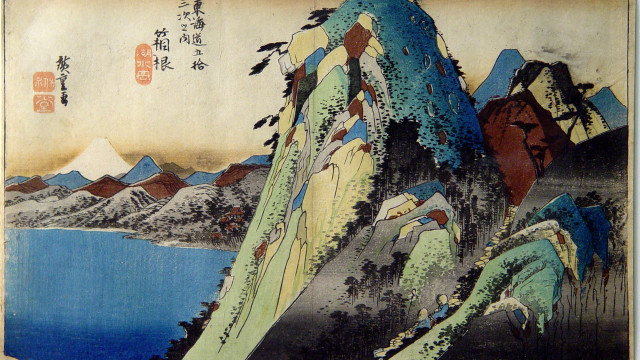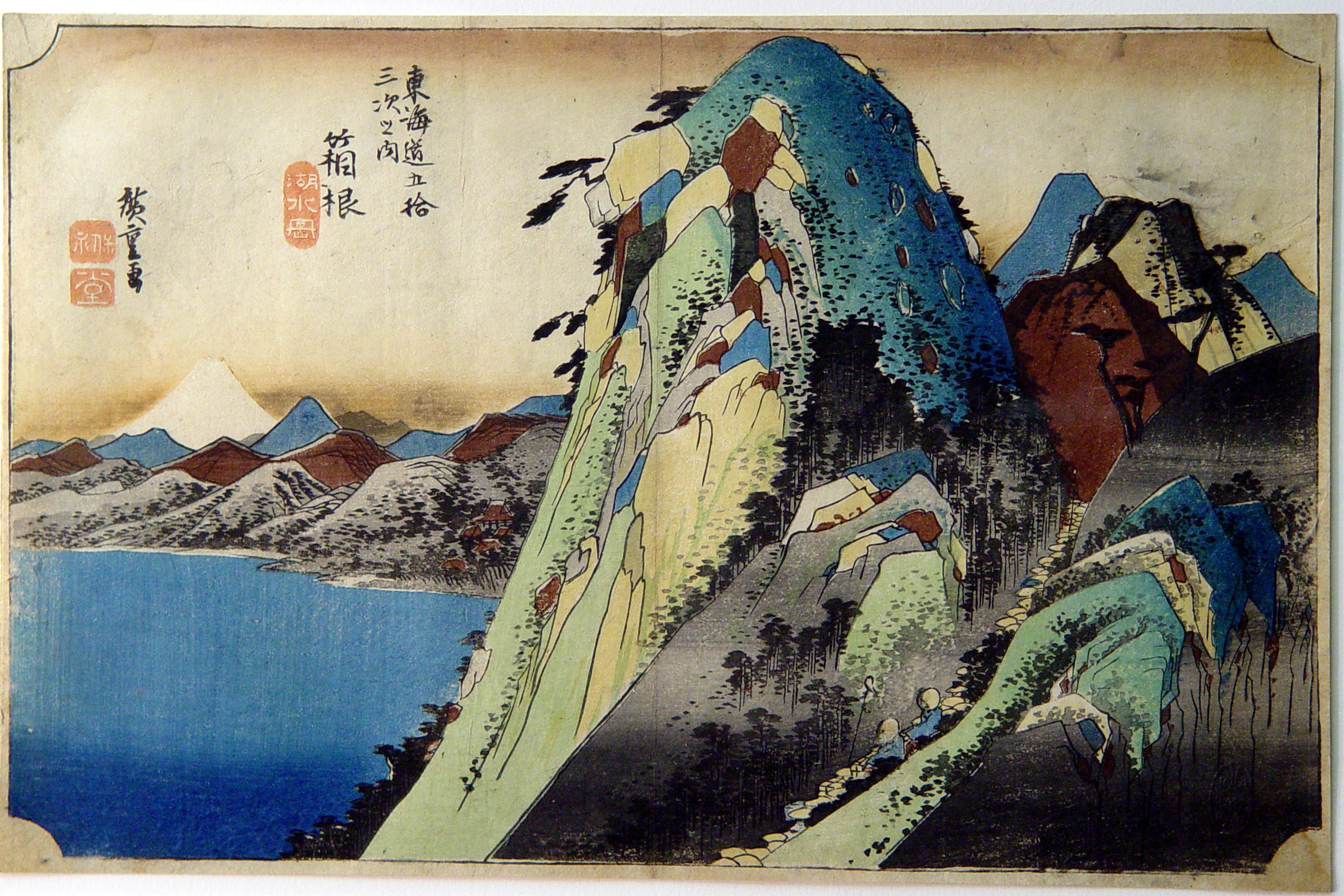
Along the Eastern Road: Hiroshige’s Fifty-Three Stations of the Tokaido
Through September 15
Hermitage Museum
This outstanding exhibition features 55 revolutionary wood-block prints by Utagawa Hiroshige (Japanese, 1797-1858), recording the scenic views along the famous “Eastern Road” that linked Edo (now Tokyo) with Kyoto, the ancient imperial capital of Japan. This popular series, known as the Fifty-Three Stations of the Tokaido Road, was published in 1834 and established Hiroshige’s reputation as the foremost artist of the topographical landscape.
In 1832, Hiroshige journeyed along the historic Tokaido, visiting the fifty-three towns and villages that dotted the road, which provided lodging, refreshments, and souvenirs for travelers. The route was traveled frequently by noblemen, merchants, religious pilgrims and tourists. Hiroshige stayed at these overnight stations and recorded numerous views of the surrounding landscape, towns and people.
Hiroshige was trained in the tradition of the ukiyo-e – “floating world”-wood-block print making. As a genre, landscape developed late in the ukiyo-e period and was greatly influenced by the prints of Katsushika Hokusai (1760-1849).
Chrysler Museum of Art (Norfolk)
“Libensky and Brychtova,” Through August
Permanent Collection, ongoing
Mayer Fine Art Gallery (Norfolk)
803-4749
Virginia MOCA (VA Beach)
“Multiplicity,” Through August 17
425-0000, www.VirginiaMOCA.org
Peninsula Fine Arts Center (Newport News)
“Emerging Virginia Artists,” Through October 12
Charles H. Taylor Center (Hampton)
“Virginia Artists 2014 Juried Exhibition,” July 26 through September 7
“Faces & Fossils: Paintings by David Dodge Lewis,” July 26 through September 7
The Artists Gallery (VA Beach)
Ongoing, various local artists
Lorrie Saunders ArtGallery (Norfolk)
“Matthew Curran: Unbroken Connection,” Through August 22
Hermitage Museum (Norfolk)
“Along The Silk Road: Hiroshige’s Fifty-Three Stations Of The Tokaido,” Through September 15
423-2052
Portsmouth Art & Cultural Center
“Changing Appalachia,” Through Oct. 5
“Outdoor Sculpture,” Through October 5
TCC Visual Art Center (Portsmouth)
“Charlotte Potter: Fragile Cartography,” Through August 29
822-1878
One 11 Art/Kennedy Gallery (Norfolk)
625-1110
d’Art Center (Norfolk)
“The Last Straw,” Through August
625-4211
Virginia Sports Hall of Fame (Portsmouth)
“Surf’s Up,” Through September 28
393-8031
Baron & Ellin Gordon Art Gallery (ODU)
683-6271
Selden Gallery (Norfolk)
664-6880




